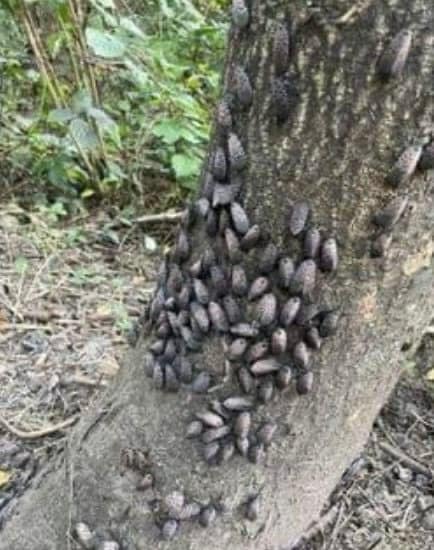People across the eastern United States are waging war against a menacing creature that aims to destroy everything it touches.
The spotted lanternfly appears to be harmless but if you see one of these highly invasive bugs, show it no mercy.
Keep reading to learn about the bug that you need to kill!
People across the eastern United States are waging war against a menacing creature that aims to destroy everything it touches.
The spotted lanternfly appears to be harmless but if you see one of these highly invasive bugs, show it no mercy.
Keep reading to learn about the bug that you need to kill!
If you look up lanternfly on social media, you’ll find several posts of people sharing their kills of these bugs, native to China, that start mating in late summer.
Shot on Galaxy S21 Ultra
— Marques Brownlee (@MKBHD) September 2, 2021
(And then run over by my car because apparently this lanternfly is a horribly invasive species and everyone should be murdering them 😭) pic.twitter.com/QkzgPNeoqJ
“Run over by my car because apparently this lanternfly is a horribly invasive species and everyone should be murdering them,” writes New Jersey’s social media influencer Marques Brownlee.
Another user shares his triumph over his recent kills: “Out for a walk, saw a spotted lanternfly. STOMP. Yay! 10 feet further on, ooh, another one. STOMP. Yay!”
Out for a walk, saw a spotted lanternfly. STOMP. Yay! 10 feet further on – ooh, another one. STOMP. Yay!
— Charles Bergquist (@cbquist) August 29, 2021
A few feet further on… Oh no pic.twitter.com/zn3WdUYvZ4
Attaching a photo of a mass of nymphs on a tree, he then continues writing, “A few feet further on… Oh no.”
Spotted lanternfly
The spotted lanternfly, or Lycorma delicatula, is an invasive species that poses significant ecological and economic threats.
Keep your eyes peeled for the "Spotted Lanternfly", recently found in Rutland in an out-of-state shipping container. No evidence today of an established population in our state, but it's a concerning incident. MORE: https://t.co/XC8ojkDgNZ #VT #spottedlanternfly pic.twitter.com/eQpFDIBrgM
— VTAgencyofAg (@VTAgencyofAg) August 30, 2021
Since it first traveled from China to Pennsylvania in 2014, it’s spread to parts of North America, feeding on plants like fruit trees (apple, cherry or grape) and hardwoods like maple or walnut, killing them over time.
They also produce a sticky substance called honeydew, which can lead to the growth of sooty mold and further damage plants.
What do they look like?
In the late summer to fall, about 30 to 50 eggs are laid in a mass which is covered in a waxy, mud-like coating. These masses are initially light gray to brownish and become darker over time.
Continue reading on next page…
